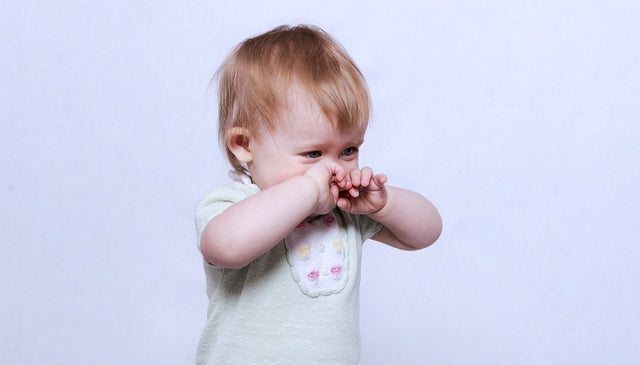Use the ‘Fast-Food Rule’ to Deal with an Upset Toddler

How to Deal with an Angry Child
The Fast-Food Rule is the golden rule for communicating with anyone who’s upset. I promise: You’ll be amazed how it works on everyone—from toddlers to teens to temperamental spouses.
In a nutshell, the Fast-Food Rule says: Whenever you talk to someone who’s upset, always repeat his feelings first…before offering your own comments or advice.
How the Fast-Food Rule Works to Calm an Angry Child:
Fast-food joints may have their problems, but they do one thing incredibly well: communicating with customers.
Imagine you’re hungry. You pull up to the restaurant order window and a voice crackles over the speaker, “Can I help you?” You answer, “A burger and fries, please.”
Now…tell me what do you think the order-taker will say back to you?
- “What’s the matter, too lazy to cook tonight?”
- “You should get 2 burgers, you look hungry.”
- “That’s 5 dollars, please drive forward.”
The answer is none of the above!
The very first thing she will do is repeat your order to you. She does this because she needs to make sure she understands exactly what you want (“Okay, that’s a burger and fries. Anything to drink?”) before she takes her turn: “That’s 5 dollars. Please drive up front.”
Normal conversations have a simple back-and-forth pattern. When we talk, we take turns (“I like chocolate!” “Me too! I love chocolate!”).
But this pattern changes dramatically when one person is upset.
How to Help an Angry Child Calm Down With the Fast-Food Rule
The rule for talking to someone who’s upset or angry is: Whoever is most upset talks first (and gets an extra-long turn to vent). The other person listens patiently and repeats back his feelings with care and interest (“Wow! What she did really made you angry!”). Only then does the friend get a turn to say what she thinks about the situation.
At fast-food joints, the person who is hungriest gets to speak first. And with parents and children (or in any dialogue between two people), the person who is most upset—the “hungriest for attention”—goes first.
Is it really so important to take turns like this? Absolutely! Here’s why: Agitated people are terrible listeners. Big emotions (like anger and fear) turn our open minds into closed doors. But once we express our feelings—and they’re acknowledged—our minds swing back open and we can again pay attention to the good suggestions of the people we love.
One More Technique for Calming an Angry Child
When you repeat what a person has shared with you about her feelings, what you say (your words) is not as important as the way you say it (your tone of voice, facial expression and gestures).
Many Moms and Dads say that the Fast-Food Rule is one of the most important parenting (and life) skills they’ve ever learned.
More Tips for Dealing With an Angry Child:
Learn to speak your upset toddler’s native language. To make sure you get through to your toddler, it’s important that you speak in a language they understand...a language I call Toddler-ese! Learn how to speak fluent toddler-ese here.
Encourage cooperation with Time-Ins. As important as it is to deal with toddler defiance and tantrums in the moment...it’s even more important to “flash a green light” on the good, cooperative behavior we do want to see. One way to do this is with what I call Time-In, which are bite-sized rewards for good behavior. Learn more about Time-Ins here!
Use magic breathing. Teaching your toddler the calming benefits of deep breathing can help them begin to self-regulate when they get upset. Here’s how to teach ‘magic breathing.’
Strike a win-win compromise. Toddlers feel like they lose all day. So, when you’re going head to head with your tot, why not strike a bargain that will let you both feel like winners? Here’s how to strike a win-win compromise.
Do your best to keep your cool. Angry toddlers have a special way of pushing our buttons! But remember, your toddler is always watching you...and if you explode, they begin to learn that that’s okay. Here’s how to keep your cool when your toddler pushes your buttons.
Save take-charge consequences for aggressive or dangerous behavior. Though your instinct might be to punish your toddler’s outburst, it’s crucial that you save take-charge consequences, like giving a time-out or a fine, for behavior that’s dangerous or aggressive.
Never spank your toddler. Hitting teaches your child that violence is an acceptable way to deal with angry, upset feelings.
Final Thoughts on How to Deal With An Angry Child
Dealing with angry outbursts from your child can be challenging. For tips about how to reduce tantrums and encourage cooperation, check out The Happiest Toddler on the Block.